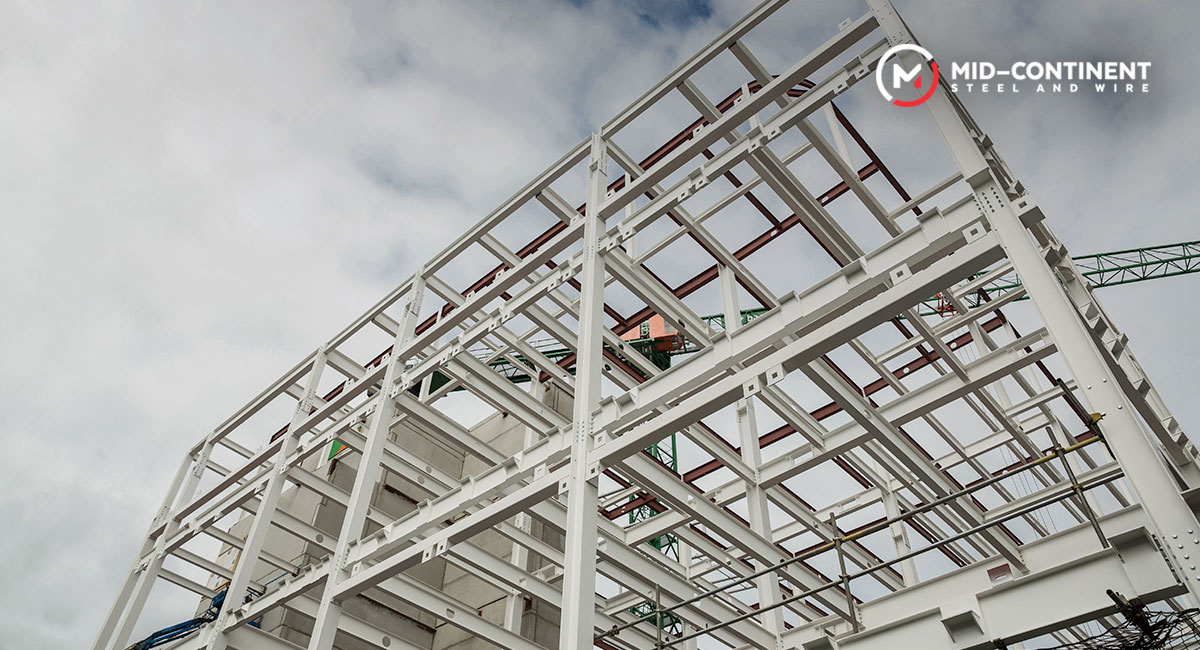
Structural steel forms the backbone of contemporary infrastructure. Far from being a uniform material, its real advantage comes from its adaptability, made possible by a wide variety of standardized forms.
It is produced and shaped specifically for construction purposes, with its chemical makeup and physical characteristics strictly governed by industry codes to ensure consistency, durability, and safety. Here are some benefits and characteristics of this important component.

Benefits of structural steel
Available in a variety of shapes and sizes, structural steel enables efficient, safe, and sustainable construction practices across virtually every sector of the industry. Some of its benefits are:
- High strength that allows for longer spans and more open interior spaces
- Excellent durability
- Corrosion resistance when coated
- High ductility that provides resistance to seismic forces
- Highly sustainable and one of the most recycled materials on earth
- Reduces demand for natural resources and minimizes waste
- Reduced on-site labor requirements
- Project cost savings

Structural steel shapes
I-Shape beams
I-shaped sections, or beams, are key structural steel elements. Their design resists bending, with the web handling shear forces and the flanges resisting bending moments.
W-Beams
The W-beam is the most commonly used structural beam in construction. Its wide, parallel, non-tapered flanges offer high strength and stability, making it ideal for load-bearing roles in floors, roofs, bridges, and even as columns.
S-Beams
The S-beam, or American Standard Beam, features sloped inner flanges with a 16.67% taper and a narrower profile than W-beams. Though less common today, it’s still used in compact, high-strength applications like machine bases and trolley systems.
HP-Beams
HP-beams, or bearing piles, are square-shaped H-beams used in deep foundations. Their equal flange and web dimensions provide strength in both directions, making them ideal for supporting heavy loads in structures like bridges and retaining walls.
Channels
Channels, or C-shapes, have a C-shaped cross-section with a straight web and two flanges on one side. While less efficient in bending than I-beams, they provide a flat surface for easy attachment to other structures.
C-Channels
Like the S-beam, C-channels have tapered inner flanges. They’re versatile and often used for stair stringers, short lintels, and wall or floor framing where a flush finish is needed.
MC Channel
MC channels are miscellaneous channels with non-standard depths and flange widths. They’re used in specialized applications like equipment manufacturing, shipbuilding, and custom construction where standard C-channels don’t fit.
Angles
Angles are L-shaped steel elements used mainly for tension and compression. Their simplicity makes them perfect for connections, bracing, and light framing.
Equal angle
An equal angle has legs of the same length, making it ideal for evenly distributed forces. It’s commonly used in trusses, bracing, support clips, and equipment frames.
Unequal angle
An unequal angle has legs of different lengths, offering varied strength on each axis. It’s ideal for uses with uneven loads or where one leg needs more space or stiffness.
Tees
Structural tees (T-shapes) have a T-shaped cross-section, made by splitting a beam or hot-rolling. They’re commonly used as connectors or to create complex structures.
WT (Structural tee, cut from a W-shape)
A WT-shape is made by splitting a W-beam along its web, keeping the wide flanges. It’s strong and stable, used in truss chords, steel frame connections, and short-span beams.
ST (Structural tee, cut from an S-shape)
An ST-shape is made by splitting an S-beam, retaining its tapered inner flange. It’s used like a WT-shape but chosen when S-beam dimensions better fit the design.
MT (Miscellaneous tee)
MT-shapes are tees cut from smaller beams, lighter and smaller than WT or ST sections. They’re used for lighter tasks like architectural details, lintels, and secondary framing.
Hollow structural sections (HSS)
Hollow Structural Sections (HSS) are steel tubes with a hollow cross-section. They provide great strength-to-weight ratio and resist twisting better than open shapes, making them popular for both structural and architectural uses.
Square HSS
Square HSS has a uniform square cross-section, offering equal strength in all directions. It’s ideal for columns, posts, and support structures, with flat surfaces that ease connections and fabrication.
Rectangular HSS
Rectangular HSS has a rectangular cross-section with different strengths on each axis, making it ideal for loads focused in one direction. It’s often used in beams, bracing, and architectural frames.
Round HSS (Pipe)
Round HSS, or structural pipe, has a circular cross-section with equal strength in all directions and strong resistance to buckling. It’s commonly used for columns, bracing, and architectural trusses.
Plates and bars
Plates and bars are basic steel products used as building blocks or standalone structural elements.
Flat bar / Plate
A steel plate is a wide, flat sheet used to make built-up sections like girders, base plates, gusset plates, and shear plates for strong connections.
Round bar
A round bar is a solid steel rod used for high-strength applications like anchor bolts, tie rods, and pins in structural connections.
Square bar
A square bar is a solid steel rod with a square cross-section, used like round bars but preferred for flat surfaces or aesthetics, often in railings, fences, and decorative work.
Tubes and pipes
While Round HSS is often called structural pipe, tubes and pipes cover many hollow steel products used in structural and non-structural roles. Their manufacturing standards vary based on uses like fluid transport, mechanical parts, or structural support.

Application of structural steel
Structural steel is used widely in building frameworks, bridges, infrastructure, and machinery due to its strength and versatility. It supports floors, roofs, and walls, and is also valued for architectural designs and large open spaces. These are some of its main applications:
- W-beams might serve as the primary floor girders, supported by HSS columns
- Channels could frame window openings
- While angles provide diagonal bracing to resist lateral forces from wind or earthquakes
- Steel plates are used at every connection point, ensuring that loads are transferred smoothly between members
Mid-Continent Steel and Wire is the way to go
Mid Continent Steel and Wire provides structural steel through a comprehensive range of products. All of our products are made with sustainable steel, and sticks to strict environmental standards in every production process. Our diverse product line adapts to industries from construction and manufacturing to energy and consumer goods. Check out our catalog and build smart.

